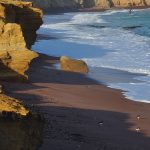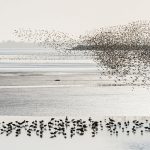Story by Salvadora Morales, Ecologist and specialist in Conservation and Development; Quetzalli Nicaragua
Last month, the 12th Central American Aquaculture Symposium took place in Choluteca, Honduras. Organized by the Association of Aquaculture Producers of Honduras (ANDAH by its Spanish acronym), the event brought together companies from across the Central American aquaculture community, including more than 500 producers from the shrimp farming industry. With the support of WHSRN and National Audubon Society, three local organizations were able to give shorebirds a voice at this event. Representatives from Quetzalli Nicaragua, the Honduran Ornithology Association, and SALVANATURA ran a stand called “Shorebirds and Aquaculture.” Amidst a sea of booths from the commercial sector, we were the shorebird among the shrimp farmers. Actions like this, which step beyond “preaching to the choir,” are an important part of engaging the industry to improve production practices and work towards shorebird-friendly shrimp farming.
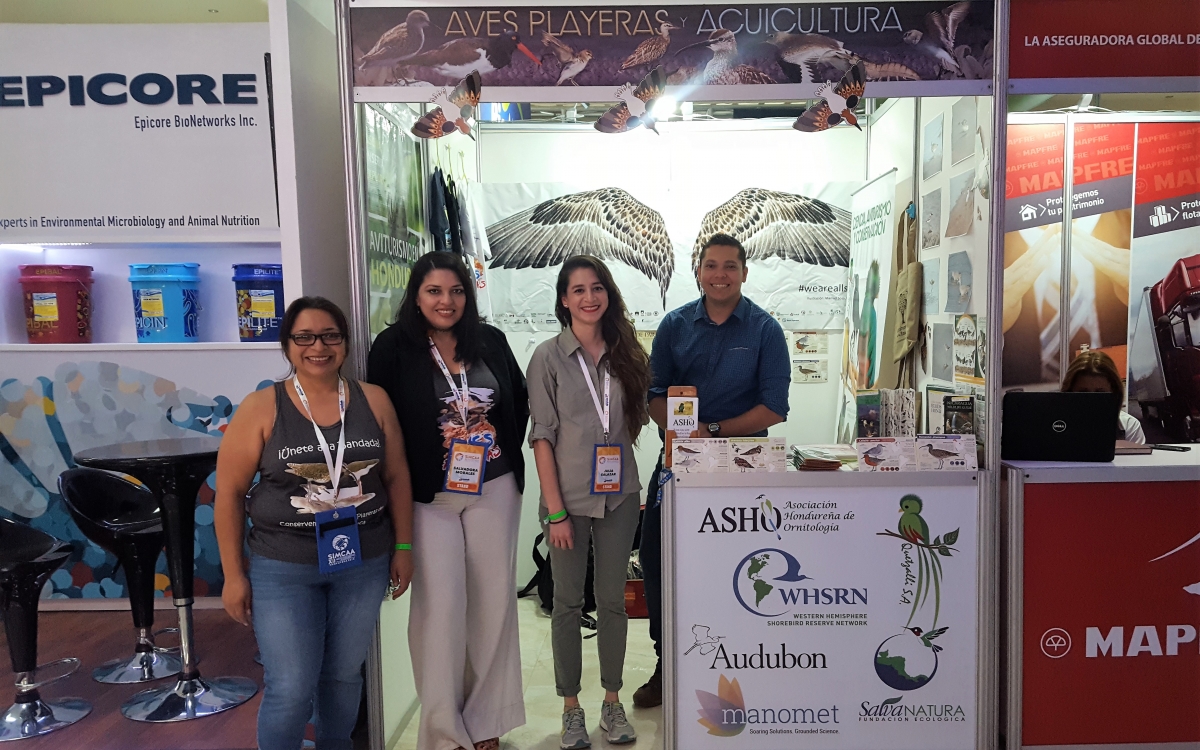
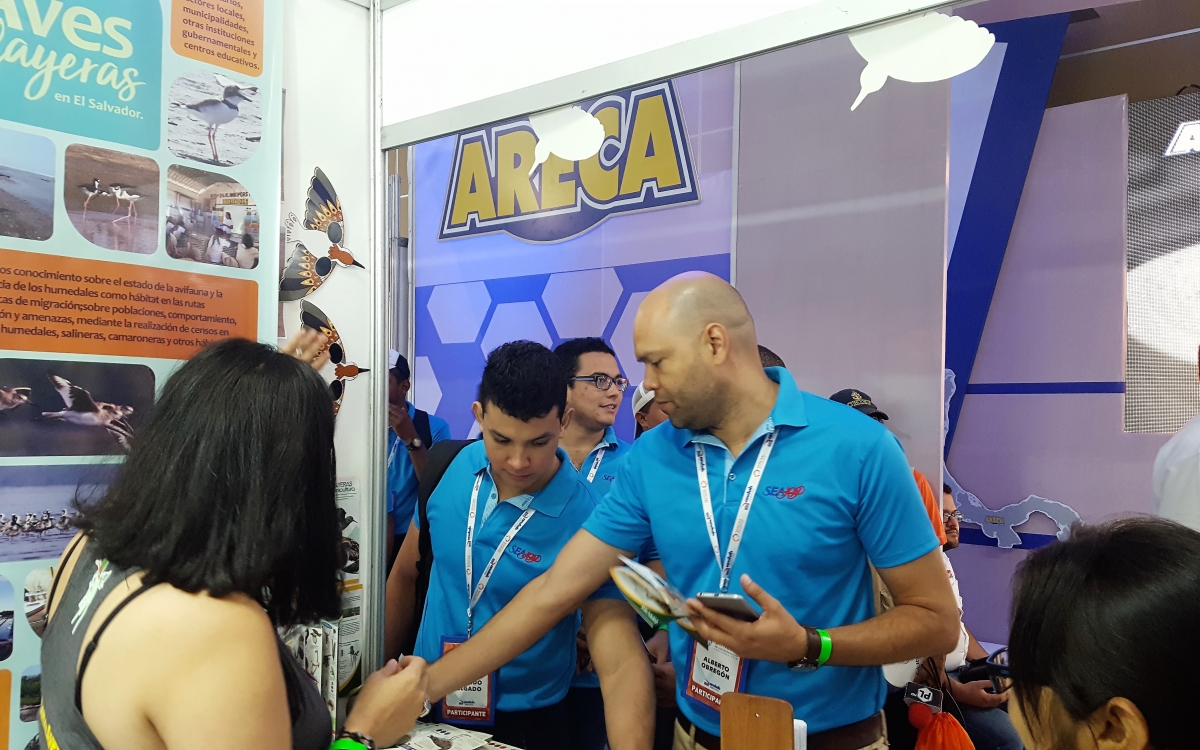
Left: The team at the “Shorebirds and Aquaculture” booth at the Central American Aquaculture Symposium. Right: Representatives from the aquaculture company SeaJoy visit the stand to learn about shorebirds. Photos: Salvadora Morales.
Our participation in the Symposium was an effort to connect the industry with the group of organizations working to study and conserve shorebirds in the Gulf of Fonseca. We took advantage of the opportunity to share information about shorebirds, and describe potential best practices that we have identified in collaboration with aquaculture companies Grupo Farallones, SeaJoy, and Acuamar in Nicaragua. We also emphasized the need for continued scientific study, to validate this initial data and gain a more complete picture of the impact of shrimp farms in the Gulf. We invited producers to be part of these studies to better understand shorebird use of shrimp farms, as this information won’t only contribute to shorebird conservation, but also to sustainable development goals.
In the Delta del Estero Real, a WHSRN site since 2016 and the Network’s only site in Nicaragua, WHSRN partner organization Quetzalli Nicaragua has found a strong connection between shorebirds and shrimp farms. During our September 2018 surveys, our team found three banded American Oystercatchers (Haematopus palliatus) resting on one of the embankments of the Farallones shrimp farm, recent arrivals from their breeding grounds. One of these birds, wearing a red band reading “F3,” was banded by Manomet’s Brad Winn and Brian Harrington in 2005 on Little St. Simons Island in Georgia. Red-F3 nests in western Connecticut, and on its annual journey from New England to Georgia to Nicaragua, unites the Atlantic Flyway (where it breeds) with the Pacific coast of Central America. This bird isn’t only connecting countries like the United States and Nicaragua, but has the potential to connect shrimp markets with local communities in Nicaragua, Honduras, and El Salvador, reinforcing the importance of dialogue between shrimp producers and the community interested in conserving the shorebirds that use these places.
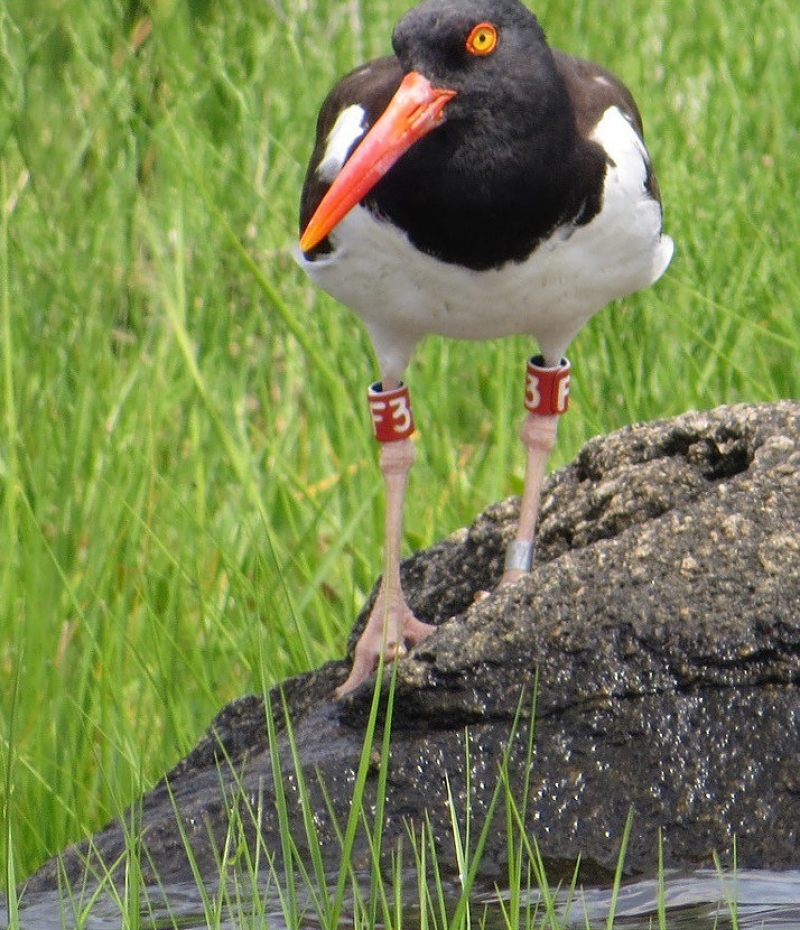
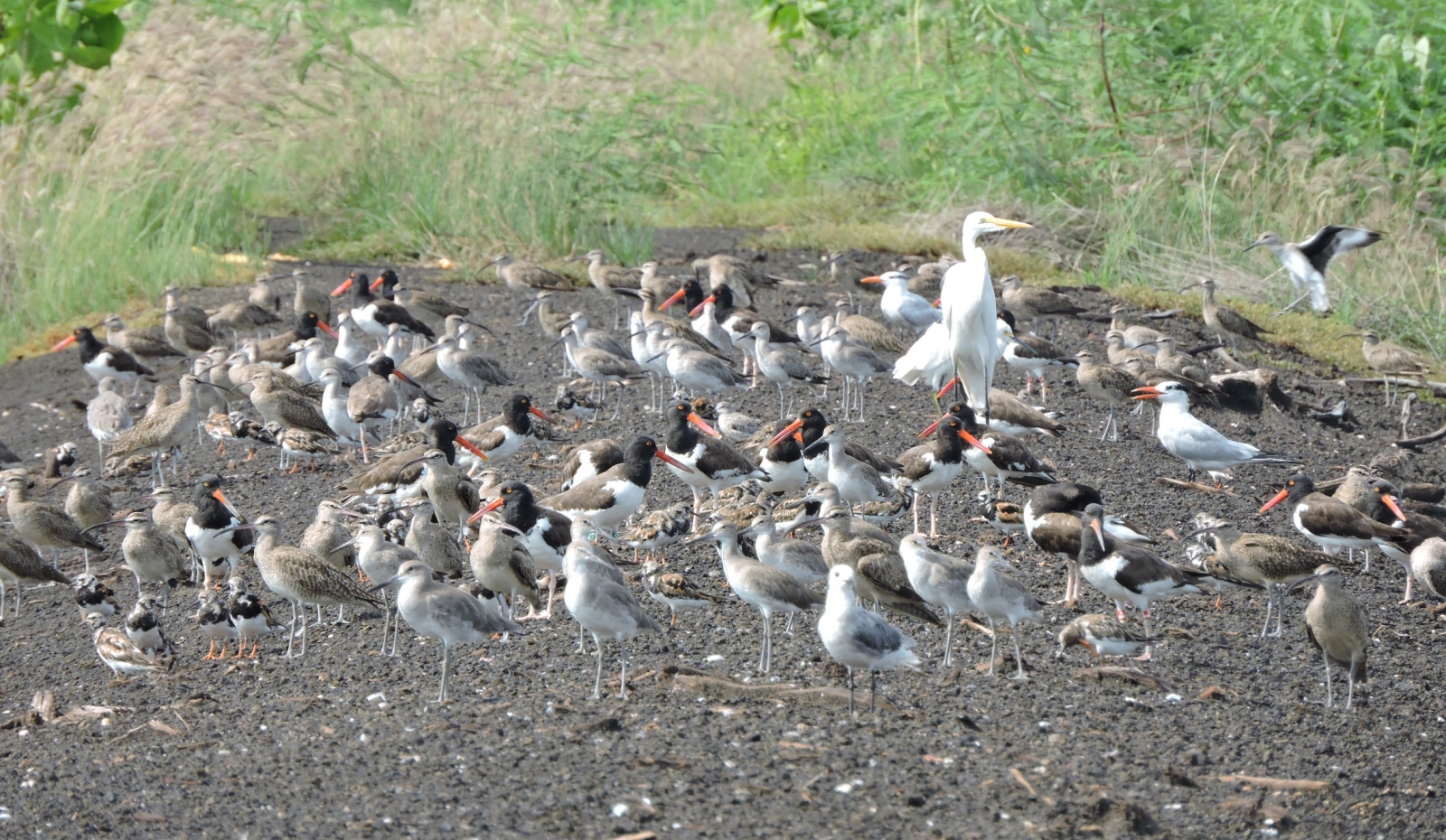
Left: American Oystercatcher “F-3” in Connecticut. Photo: Beth Amendola/Audubon Alliance for Coastal Wetlands. Right: A group of shorebirds resting on an embankment at the Farallones shrimp farm in Nicaragua. Photo: Quetzalli Nicaragua.
On Shrimp Farming and Shorebirds:
There are approximately 52,000 hectares (~ 128,495 acres) in shrimp aquaculture in Central America, of which 41,070 hectares (~101,486 acres) are concentrated in semi-intensive production systems in the Gulf of Fonseca. To date, 43 species of shorebirds have been reported in the Gulf of Fonseca. 30 of these species are neotropical migrants that depend on the Gulf’s diversity of natural habitats, including tidal mudflats, sand and gravel beaches, rivers, estuaries, fresh water wetlands, shrimp farms, and salt ponds.
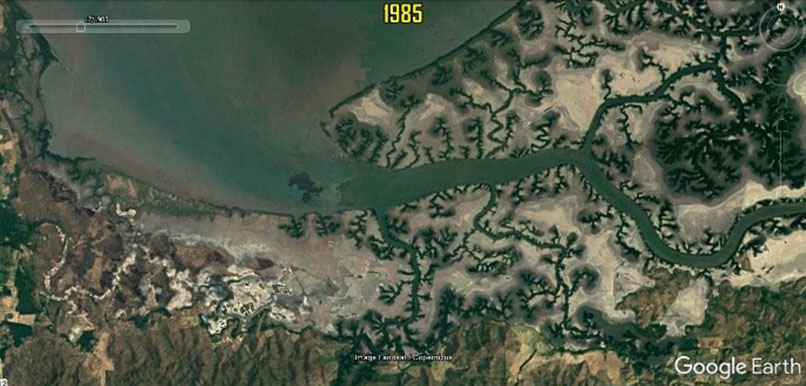
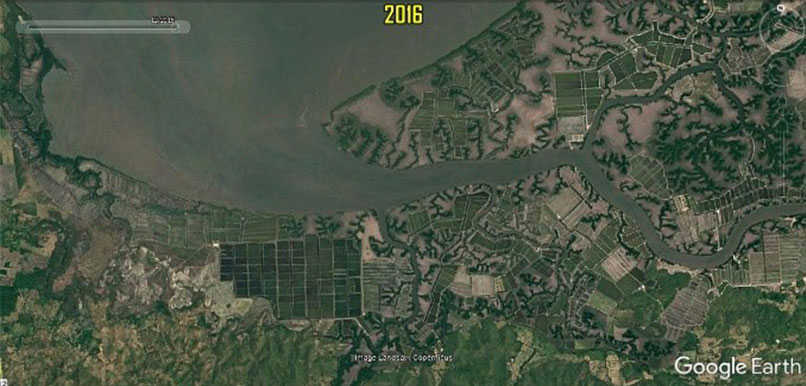
Satellite imagery showing the increase in aquaculture production in the Gulf of Fonseca, 1985 to 2016.
Shrimp farms have mainly replaced natural salt flats and black mangrove forests. How did shorebirds use these salt flats before they were transformed? It is a question we may not be able to fully answer. We have found the resident population of Wilson’s Plover (Charadrius wilsonia) nesting in the few salt flats and wetlands that remain. It is urgent that we endeavor to understand the current status of shorebirds using these habitats, and work to incorporate natural areas and scientific data into best management practices. These are the conservation actions that can maintain a balance between development and conservation, and both natural and managed habitats.
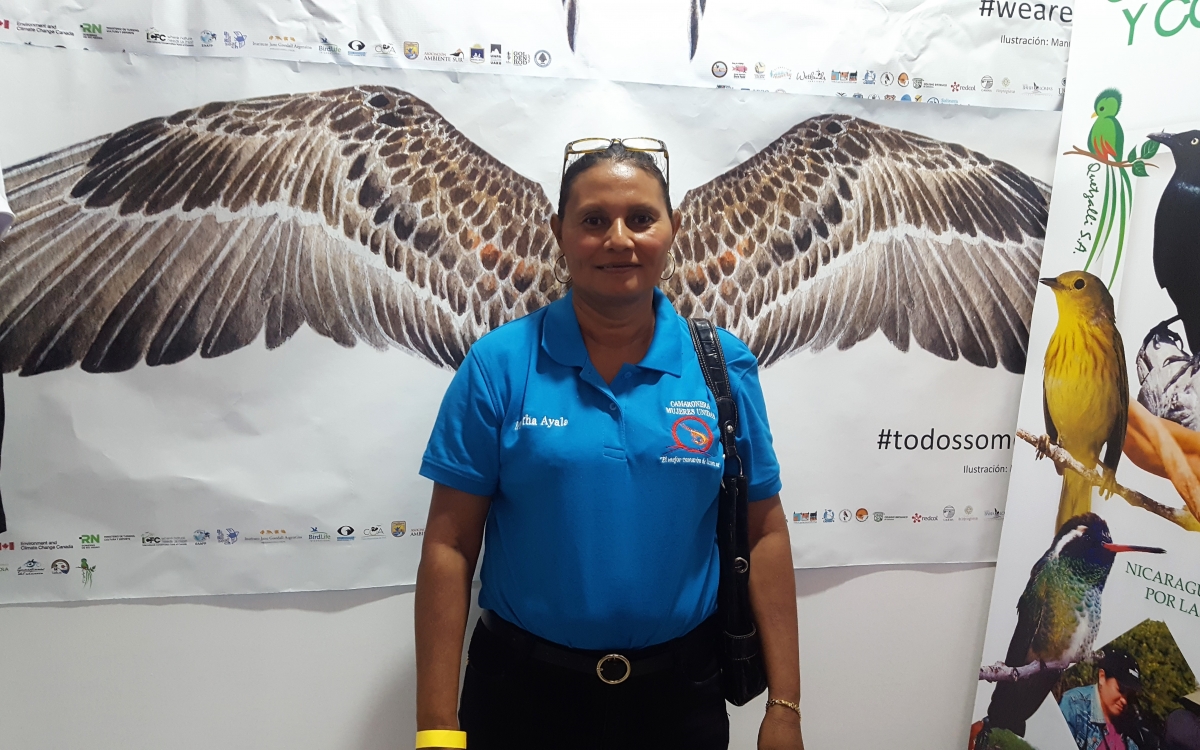
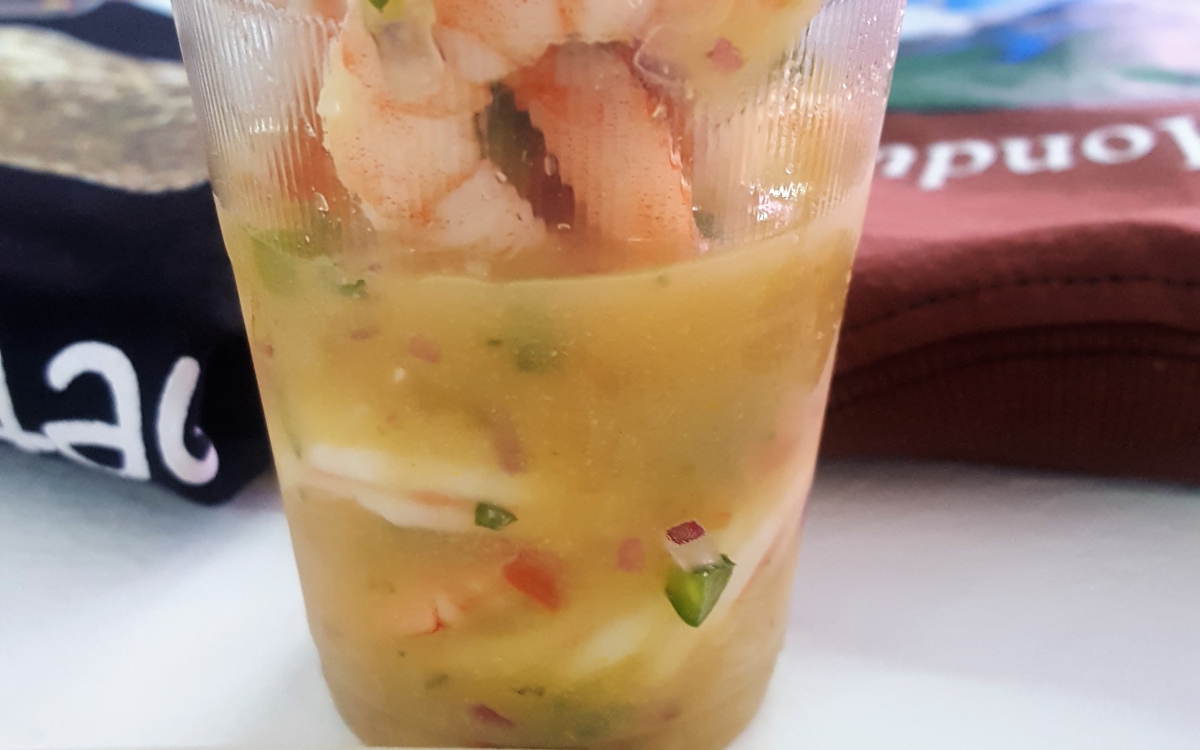
Left: The President of the Women Shrimp Producers Group shows her support for shorebirds. Right: Shrimp and shorebirds. Photos: Salvadora Morales.
For more information, contact Salvadora Morales at salvadoramorales@gmail.com





